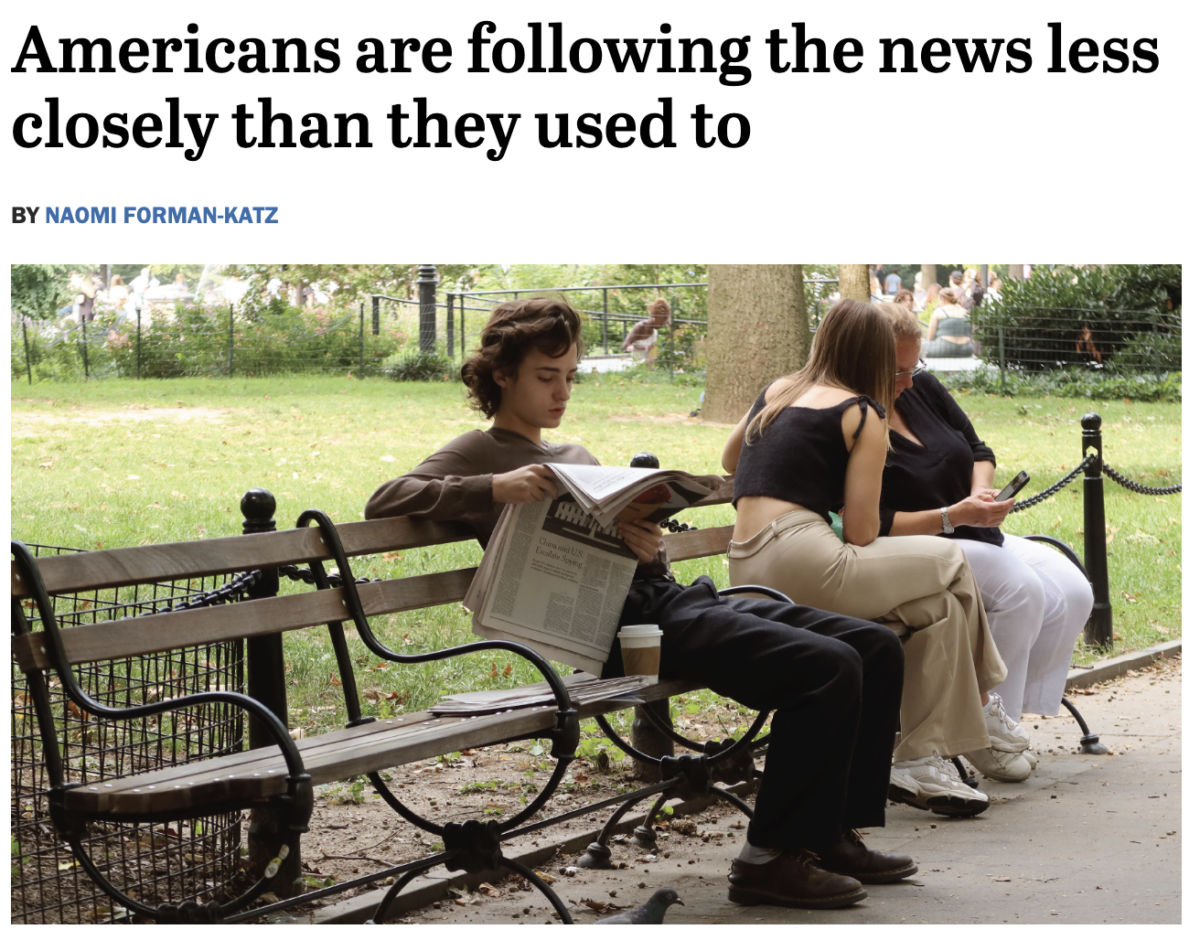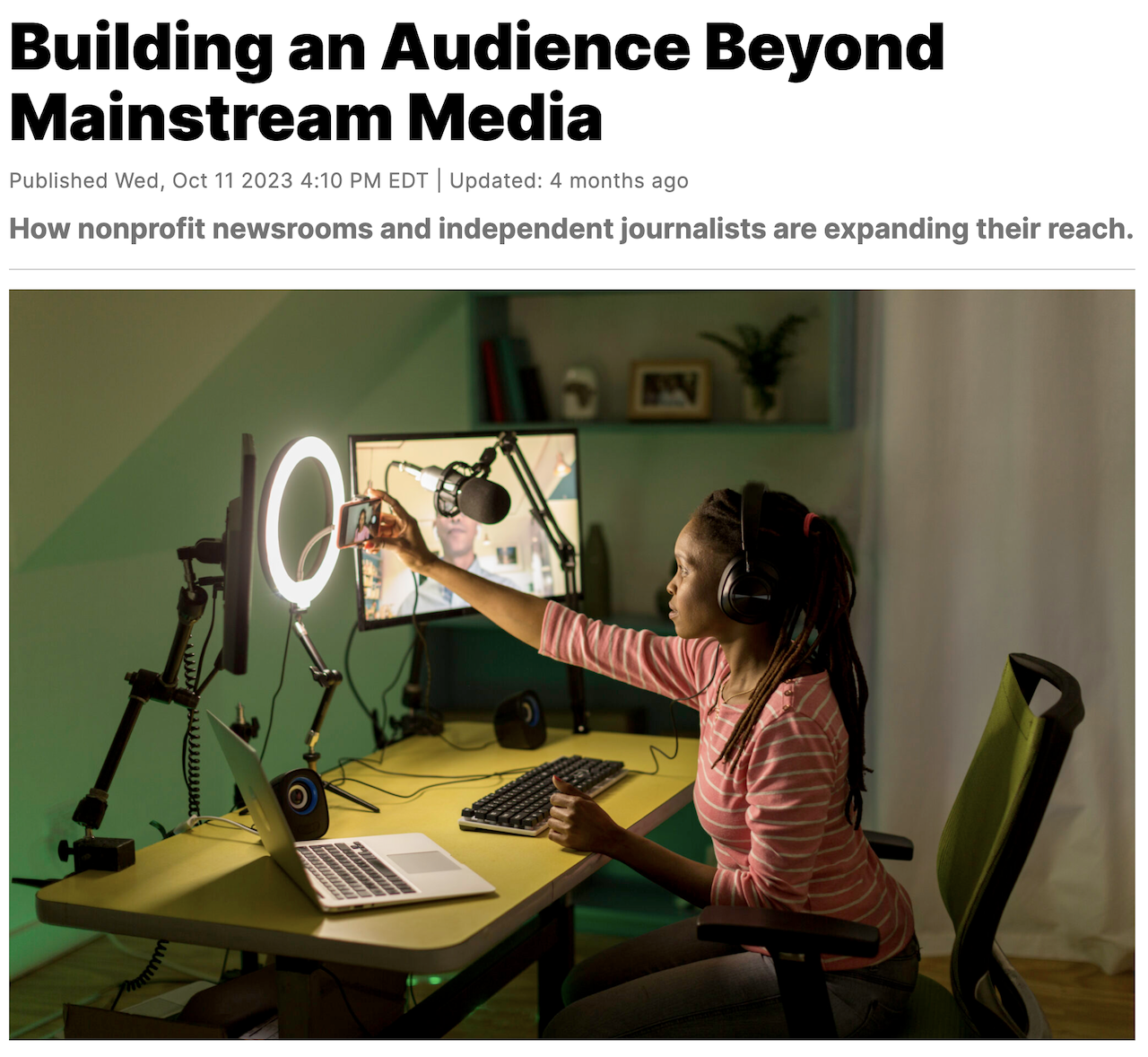News media is going through an evolution. Americans are following the news less closely than they used to, and those that do are consuming it in new, less time-consuming ways. Watching a daily broadcast or reading long-form articles is now for the minority.
With fewer site views, news outlets are attracting fewer ad dollars and struggling to find necessary income sources. Publications are shutting their doors and slashing jobs due to a lack of profitability.
Since the beginning of 2023, 20,000+ media jobs have been eliminated with 500+ journalists being laid off in January 2024 alone. It’s not an easy time to be a reporter. They are continually being asked to do more with less, all while worrying about job security.
With so much in flux, how can brands still present news to journalists in appealing ways and work with them more effectively? It starts with understanding where the industry is headed.
Let’s break it down:
- Why + how the news landscape is changing
- What the future of journalism looks like
- What this means for PR strategies + brands

Why and how the news landscape is changing
There are numerous reasons behind the drop in news site views, including:
- News burnout and avoidance
- Competition with entertaining alternatives
- Social media sites deemphasizing news links
- Rise of other influential voices
- Google’s rollout of A.I.-integrated search
News burnout and avoidance
The proportion of news consumers who say they avoid news has increased sharply according to a Reuters report. Respondents claim news negatively impacts their mood and that they sometimes avoid the news because it can be hard to follow or understand.
Peter Hamby, former political reporter at CNN and Snapchat’s current head of news, explains on an episode of Offline that “…news can feel like homework to a lot of people. In addition to being sad and worrisome and giving you anxiety, it can feel tedious to sit down [and read].”
Competition with entertaining alternatives
People don’t just suffer from news fatigue or avoidance, they are also simply looking for more entertaining ways to spend their time.
“News consumption doesn’t just compete across publications, it competes for general attention.”
The Reuters Institute for the Study of Journalism released a report in 2023 that found respondents often weighed their renewal of news subscriptions against digital streaming services like Disney+, Hulu, Netflix, Amazon Prime and Spotify.
Hamby continues, “It’s not just CNN competing against MSNBC and Fox. It is CNN competing against Roblox and competing against TikTok. Call it dopamine, call it a short attention span or whatever, but it’s (news) not something that people feel is essential to their everyday lives.”
Social media sites deemphasize news links
Social media referrals to news sites have been cut nearly in half in the last three years. Research from Similarweb shows that in 2020, leading news sites were getting about 11.5% of their web traffic within the US from social networks. By 2023, that was down to 6.5%.
Social sites have deemphasized the display of news links that might cause people to click away from their platforms, favoring instead the content shared directly in feeds. The shift has officially been coined “zero-click content.”
Rise of other influential voices
While people aren’t clicking away from social sites to read news, they are still getting news on social platforms. Personalities are rising in popularity as alternative news sources because they instill a sense of trust among their communities.
A Pew Research Center study found that 32 percent of adults under 30 say they regularly get news on TikTok. Audiences now pay more attention to celebrities, influencers and social media personalities than journalists on platforms such as TikTok, Instagram and Snapchat.
Google’s rollout of A.I.-integrated search
Google regularly updates features of its Search Engine Results Page (SERP) so that users can find answers quicker. But with the introduction of A.I.-integrated search, answers to queries now show up within the Google interface, eliminating the need to click on a result to find an answer.
A task force at The Atlantic studied what would happen and found that 75% of the time, the AI-powered search would deliver a complete answer to a user’s question and deprive The Atlantic of that potential traffic.
What the future of journalism looks like
Mostly consumers, not ads, will need to pay for the services that outlets provide. This requires a devoted audience that is eager to engage and support. So while national and middle-market news will continue to struggle, the future of journalism is going niche.
Specialty outlets will increasingly begin providing coverage that can’t be found elsewhere and represent personalities that readers can connect with. These outlets won’t have mass market reach. They’ll be smaller, partisan and specific. To succeed, they will need engaged followers, and most importantly, reader trust.
There’s a need for the dynamic and well-trained research and journalism of traditional media AND for the dynamic presentation of stories by social media personalities. Influential journalists and content creators who can master both will thrive. The general public has an increasing appetite for alternative voices that stray from the mainstream and for those that weave in personality and entertainment.
Independent outlets and Substacks are emerging for everything from local news to cultural commentary and in-depth reporting. Niche interest has steadily been increasing, with Substack’s paid subscriptions growing from 50,000 to 2 million over the past three years. Other sites such as Medium and Patreon offer similar ways to monetize content but haven’t picked up as much speed.
As for social media, The Economist explains, “Amateur news anchors on TikTok are becoming increasingly popular, with some even surpassing established news outlets in terms of followers. These individuals deliver news in a concise and engaging format, often adding their own commentary and caricaturing traditional news reports. They claim to offer authenticity and emotion, which they believe mainstream news lacks. This approach has resonated with younger audiences who seek relatable and relevant content.”

What this means for PR strategies + brands
Broaden what you historically considered PR to be. As the media landscape changes, so must PR strategies. Don’t be afraid to try new tactics. Belle’s earned media strategists recommend that brands keep the following in mind:
Demonstrate your value
The relationship between PR professionals and journalists is and will continue to be important. Communicators must lift a burden off the shoulders of reporters. As journalists are asked to do more with less, sources that can quickly and steadily provide compelling stories, new data, assets and unique, hard-to-get POVs will stand out.
As we all adjust to the ever-changing media landscape, brands should work with PR partners to reevaluate what makes for a great story idea. Just because it’s relevant to your brand doesn’t mean the media will agree. With their boots on the ground, PR partners can offer clients counsel on how to create enough value to capture modern media attention.
Focus on data, thought leadership + BIG brand moments
As the journalist pool shrinks, having a killer story rises in importance. Things that earned news coverage in the past may not capture attention in the current environment. First-party data, third-party sources that validate trends and expert insights will help heighten your B2B pitching efforts. Brand moments that include unexpected collaborations and appeal to the masses will grab B2C media attention.
Don’t rely just on national media
While heavy hitters like The New York Times will continue to thrive with their diversified business models (news + cooking + games) more national outlets are likely to downsize or close in the coming months and years. Only pursuing national news stories in the traditional sense will ultimately be detrimental to achieving your credibility and visibility goals. Ensure your PR strategy thinks bigger.
Pay attention to trade, niche + online communities
It’s time to give trade media the credit it’s due. While national media hits may feel flashier, as the news landscape continues to niche down, trade media and online industry communities will increase in value. While representative of a smaller audience, they offer tremendous ROI with an engaged readership that matches your target market. This goes for “indie” publications, too.
Consider advertorials
As we anticipate more competition for national news coverage and less earned media space, we suspect outlets will be increasingly focused on advertorial content. This includes sponsorship of bylined articles and participation in paid programs like Forbes Council. Don’t hesitate to put on your reporter hat and tell the important stories your brand wants to be a part of. Many brands are even hiring newly available journalists to lead content programs.
Be prepared to go on camera
As fewer people read long-form articles (or simply get distracted by alternative social content) video will be prioritized by the media. This means you may need to jump quickly on opportunities to talk with reporters via Zoom or in person. Prepare your executive team with media training so they can effectively talk in short sound bites, avoid filler phrases and portray confidence on camera.
Consider influencer partnerships
While you might not be ready to pitch a TikTok reporter with a story, know that TikTok news anchors and influencers are reaching Gen Z in a way that drives them to action. When building PR strategies, always evaluate which online voices and outlets your target audience trusts the most. It may be more impactful and economical to partner with an influencer to share your announcement, reach new audiences or build credibility.
Pivot to get media attention
As more media outlets close or downsize and as writers themselves become micro news outlets, PR strategies must pivot accordingly. Understand that you will need to adjust your media lists, do bigger things to get attention and rethink what makes headlines.
Lean on your PR partners to pressure test ideas, campaigns and announcements to ensure they have a newsworthy element, and to support journalists in this tumultuous era.
Ready to rethink your approach? Reach out.

